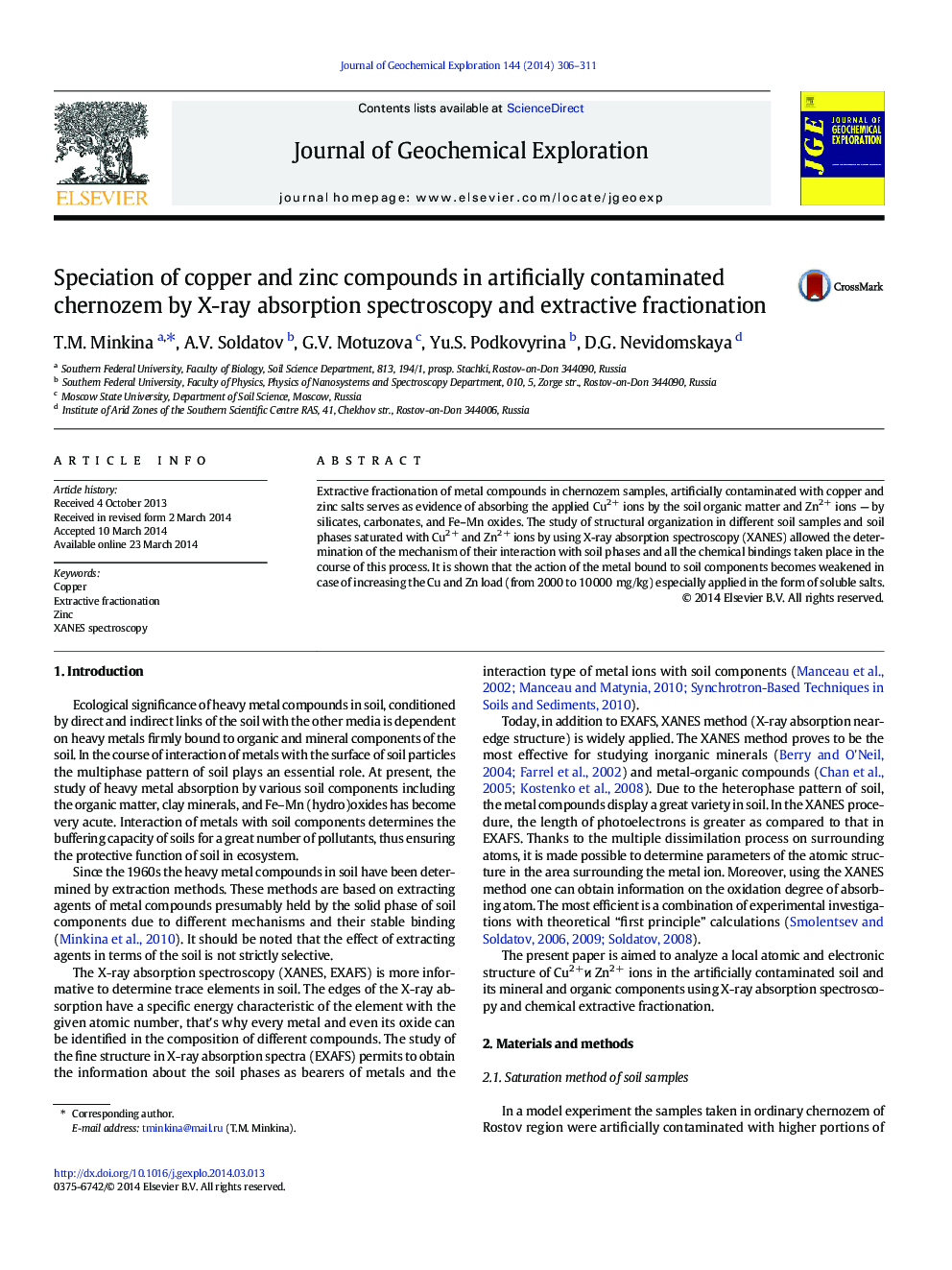| Article ID | Journal | Published Year | Pages | File Type |
|---|---|---|---|---|
| 4457380 | Journal of Geochemical Exploration | 2014 | 6 Pages |
•Decrease of Cu and Zn bonding with soil compounds occurs with increasing of pollution.•Soil organic matter is the major component for bonding Cu ions.•Fe–Mn nonsilicate compounds and carbonates play pivotal roles in bonding of Zn ions.•Zn2 + ions replace Ca2 + ions in the octahedral positions.
Extractive fractionation of metal compounds in chernozem samples, artificially contaminated with copper and zinc salts serves as evidence of absorbing the applied Cu2 + ions by the soil organic matter and Zn2 + ions — by silicates, carbonates, and Fe–Mn oxides. The study of structural organization in different soil samples and soil phases saturated with Cu2 + and Zn2 + ions by using Х-ray absorption spectroscopy (XANES) allowed the determination of the mechanism of their interaction with soil phases and all the chemical bindings taken place in the course of this process. It is shown that the action of the metal bound to soil components becomes weakened in case of increasing the Cu and Zn load (from 2000 to 10 000 mg/kg) especially applied in the form of soluble salts.
